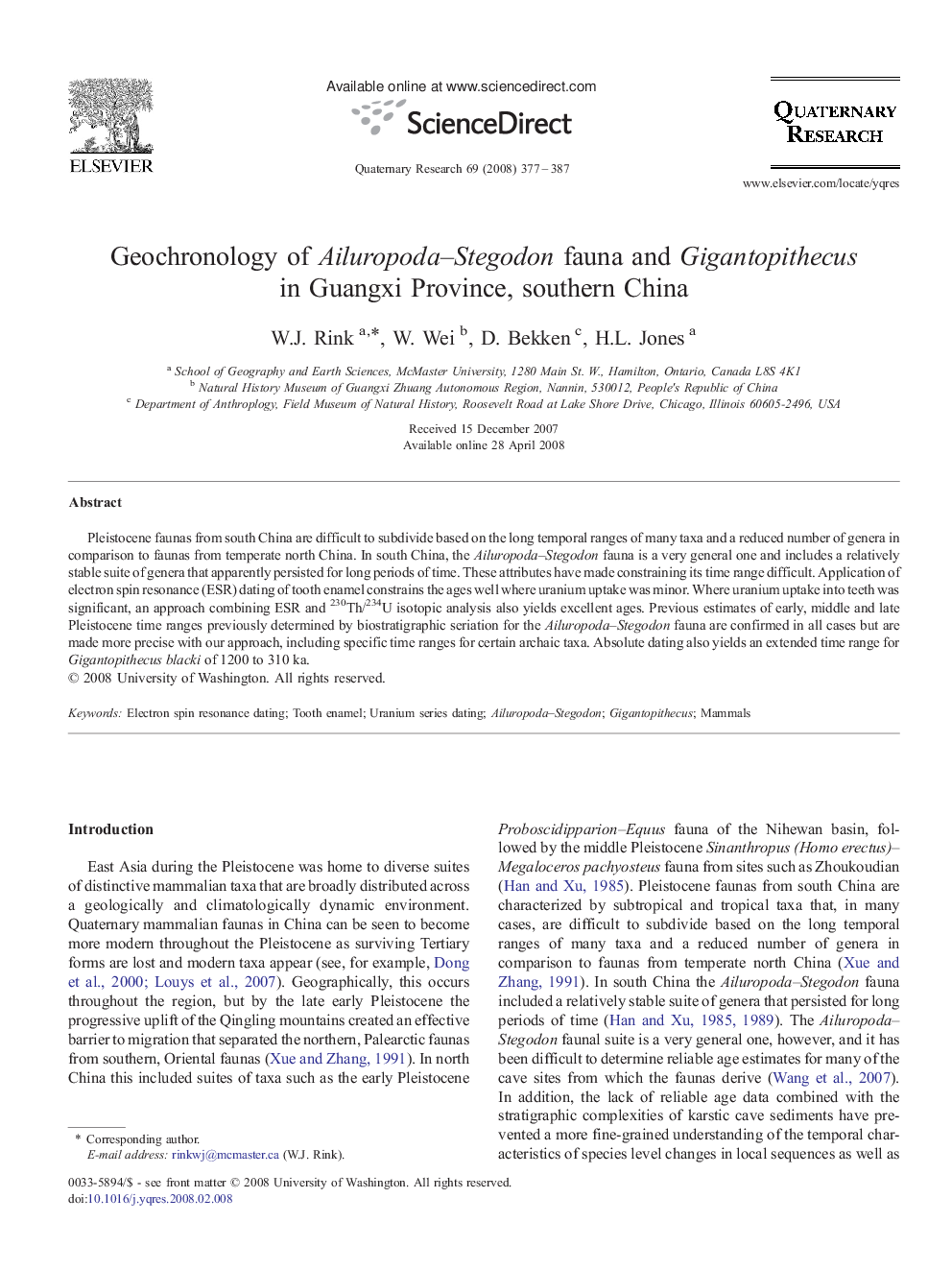| Article ID | Journal | Published Year | Pages | File Type |
|---|---|---|---|---|
| 1045777 | Quaternary Research | 2008 | 11 Pages |
Pleistocene faunas from south China are difficult to subdivide based on the long temporal ranges of many taxa and a reduced number of genera in comparison to faunas from temperate north China. In south China, the Ailuropoda–Stegodon fauna is a very general one and includes a relatively stable suite of genera that apparently persisted for long periods of time. These attributes have made constraining its time range difficult. Application of electron spin resonance (ESR) dating of tooth enamel constrains the ages well where uranium uptake was minor. Where uranium uptake into teeth was significant, an approach combining ESR and 230Th/234U isotopic analysis also yields excellent ages. Previous estimates of early, middle and late Pleistocene time ranges previously determined by biostratigraphic seriation for the Ailuropoda–Stegodon fauna are confirmed in all cases but are made more precise with our approach, including specific time ranges for certain archaic taxa. Absolute dating also yields an extended time range for Gigantopithecus blacki of 1200 to 310 ka.
